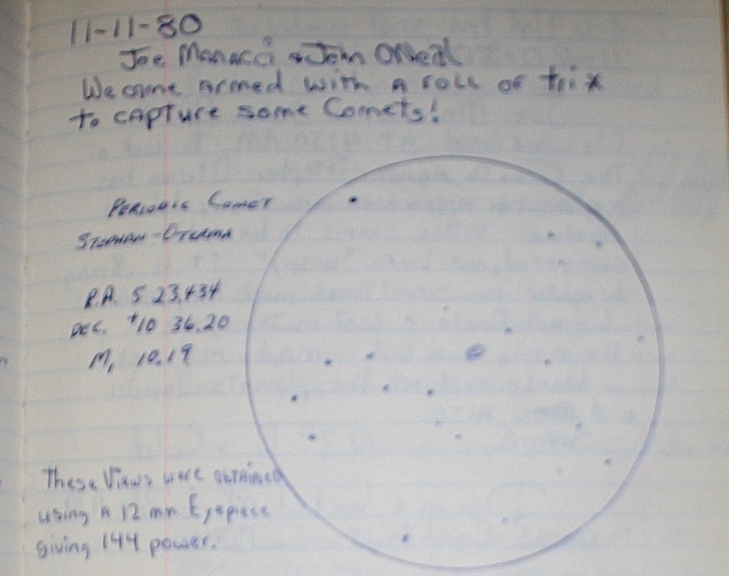38P/Stephan–Oterma (also known as Comet Stephan–Oterma) is a periodic comet with an orbital period of 38 years.
It fits the classical definition of a Halley-type comet with (20 years < period < 200 years).
It was discovered in January 1867, by Jérôme Eugène Coggia at Marseilles Observatory, France.
It has perihelion near the orbit of Mars and has aphelion near the orbit of Uranus.
Acting like a centaur-hybrid, between the years 1982 and 2067, this object will make close approaches to the giant planets Jupiter, Saturn, and Uranus.
If this object did not have a coma and (for some definitions) had a perihelion beyond Jupiter's (5 AU), it would be considered a centaur.
38P/Stephan–Oterma last came to perihelion on November 10, 2018. It was recovered by Pan-STARRS on June 24, 2017 while 5.3 AU from the Sun.
On November 11th, 1980 Joe Manacci and I went to the Black River
Astronomical Society's Louis J. Rick Observatory, on Garfield Road in
Birmingham, Ohio,
armed with a roll of Tri-x film and my trusty OM-1
Astrocamera to capture and photograph Comet Stephen Oterma.
Below is a
scan of my logbook entry. We observed the comet through the Mason
Telescope, a 12.5" homemade classical Mak.


